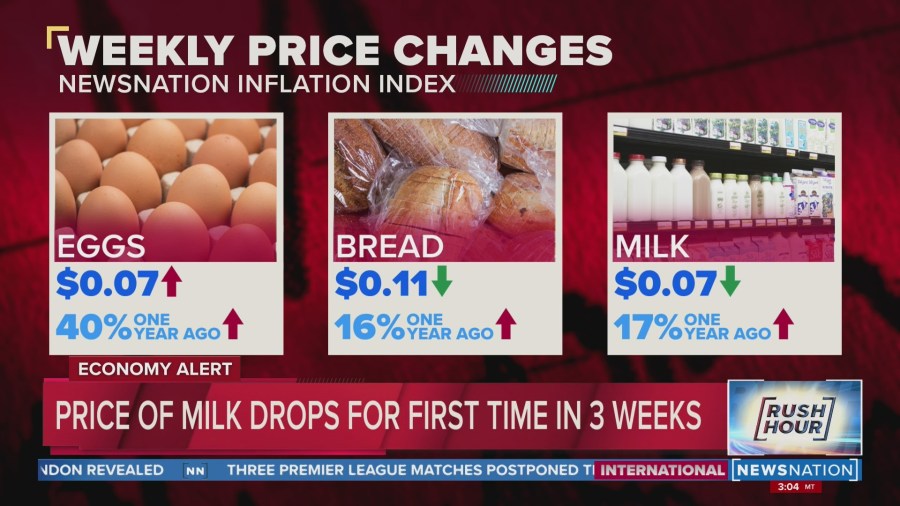Shoppers learn to cope with fluctuating food prices
Testing on staging11
(NewsNation) — Although milk prices dropped $0.7 after three straight weeks of going up, the price point is still up 17% from a year ago. Overall, eggs are still near the $4 mark for a dozen and bread $3.31 a loaf, while milk is up a whopping $4.29 from last year.

Overall, shoppers are now paying 11% more at the grocery store compared to last year and some analysts believe prices will still go up.
The trend highlights market fluctuations for everyday food items with which consumers are learning to cope.
“Mayo, condiments, things like that — I’m like, this shouldn’t have to cost this much. Even things like drinks, sodas, things like that. This shouldn’t have to be $7. Why?” said Chidimma Igboakaeze, Instacart shopper.
Today, the ribeye steak was on sale for $17 a pound. A 6-pound whole chicken costs well over $14 and these meat prices are actually an improvement.
“They’re actually a touch lower, and this is the lowest price in a year. But they’re still at a really high level from what we’re used to,” David Anderson, an agricultural economist and professor at Texas A&M University, said Tuesday on NewsNation’s “Rush Hour.”
Anderson said the price drop — new federal data confirms beef, veal, fish, seafood and poultry prices were down by 3% last month — is partly due to the culling of herds because of heat and drought.
But dairy products are up by 16%, produce by 8%, grain products by 16%, and eggs are up by a massive 40%.
“That’s got to be about the highest price ever monthly for egg prices,” said Anderson, who attributed the high egg prices to skyrocketing livestock feed costs.

Agriculture experts are tracking the impact of high prices on consumer demand. It’s estimated that about three-quarters of all shoppers have already changed their habits.
“So some are buying the same item — think branded cut item that’s your favorite — just buying less often or in a lower volume. Some are switching the cut. So, instead of buying a ribeye steak, they’re buying a sirloin, or maybe instead of buying a pork chop, they’re buying a ham,” Glynn Tonsor, an agriculture economist at Kansas State University, said Tuesday.
A new threat that could push consumer prices even higher is a potential rail strike. That and overall inflation will likely have an impact on holiday dinners in the months ahead.




